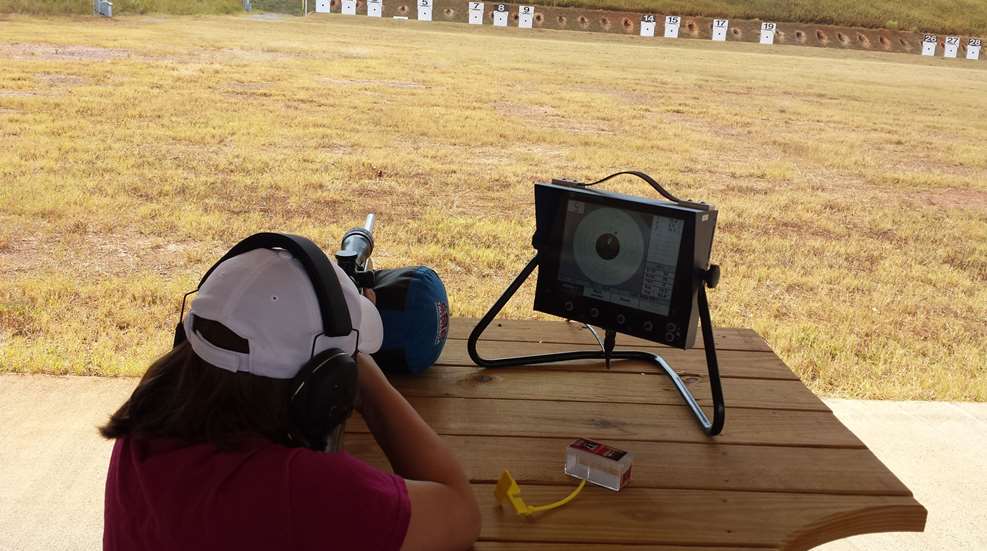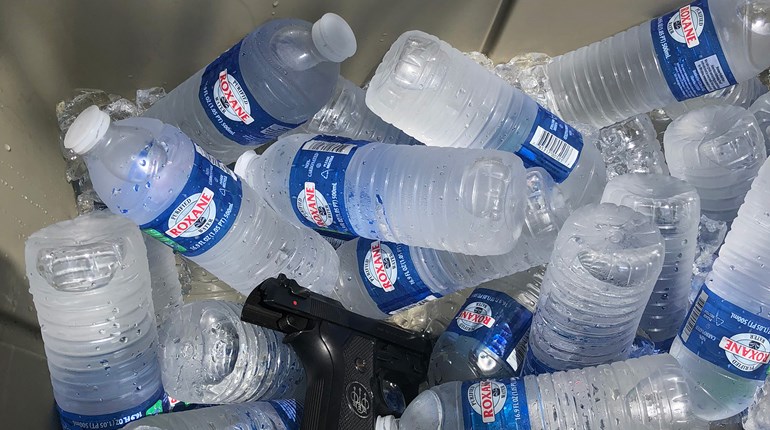
I’ve shot at a lot of gun ranges over the years, and each one is different as far as what you can expect and what you need to bring. I’ve been to some really nice indoor ranges where snacks, ammo, targets and everything you might need can be purchased on-site. I’ve been to fancy outdoor ranges with electronic scoring systems and steel targets, so I didn’t need my own. And then I’ve been to middle-of-nowhere ranges in the woods that are nothing more than a rickety wooden bench and a dirt berm.

All of that has taught me that it’s better to throw a few extra items in your range bag than to be caught without something you need, particularly at those more DIY outdoor ranges where all that’s provided is some space and a backstop, and you need to take care of the rest. Here’s a list of items you should take to the range with you besides the obvious gun, ammo, and eye and ear protection.
1. Med Kit
Stuff happens, and you should be prepared to treat everything from scope bites to a gunshot wound if the absolute worst were to occur. Carry a med kit and know how to use the important items in it, and if you don’t have cell service at an isolated range, it’s a good idea to know the quickest way to get in touch with someone, even if you have to drive in a specific direction to get a cell signal quickly.
2. Wipes
Bring along some hand wipes to clean yourself and some gun wipes or an oily rag to give your firearm a quick once-over before you put it back in the case. For you, keeping your hands clean decreases your lead exposure, and for your gun, an after-shooting wipe-down is a little bit of insurance for those times you come home from the range and forget to take the gun out of the case for a few days.
3. Targets
At most ranges, you’ll need to supply your own paper targets. Use any kind you like—body silhouettes, plain black-and-white bullseyes, paper plates with a circle drawn on them, or whatever else you prefer. I am partial to the Shoot-N-C targets from Birchwood Casey, especially when I’m sighting in rifles, as they make it really easy to see your hits from a distance.
Some ranges don’t even have a way to hang targets, so if this is the case where you’ll be shooting, be sure to take some empty cardboard boxes or some other form of target stand to hold your targets. Those plastic political yard signs work great for this if you can get your hands on some that are no longer needed after an election is over.
4. Attachments
You’ll need duct tape, a staple gun or clothespins to attach your targets to the stand, depending on the setup. Even self-adhesive targets don’t stick to every surface, so if you don’t know what you’ll be facing when you arrive, pack at least a staple gun and some clothespins so you can secure targets at all four corners. If it’s even slightly windy, you’ll be glad the bottom of the target isn’t flipping around on you while you’re trying to aim.
5. Rests
Bring a Lead Sled, some sandbags or some other kind of rest if you’re going to be shooting rifles. Some ranges have these available for your use, but many expect you to supply your own.
6. Writing Tools
Bring a marker or a pen to label your targets if you plan to analyze them later, plus a notepad to take notes. This is especially helpful when patterning a shotgun or sighting in a rifle, or when you’re testing out different loads to see which your gun shoots best. I know you think you’ll remember the details after you get home, but you won’t. Label your targets and write down your notes.
7. A Small Tool Kit
Stuff works its way loose at the range. A multitool or a small tool kit will help you tighten things down, make adjustments, and otherwise work out minor issues.
8. A Spotting Scope and a Rangefinder
If you’re shooting rifles at a simple, DIY-style range, you’ll want to know your distance, and a rangefinder will give you a much more accurate measurement than just walking it off and estimating. The farther you plan to shoot, the more important this is.
You might also be really glad you brought a spotting scope on a tripod, or at least a set of binoculars if you’re not shooting too far, so you can read your hits. This is very helpful if you’re sighting-in a rifle for the first time. It can be hard to see tiny holes in paper at 100 yards through your scope, and if you don’t have a better way of examining targets from afar, you’ll be making that 100-yard trek back and forth after every shot.
9. Something in Which to Put Empties
It’s bad form at most ranges to leave your spent brass or empty shotgun shells on the ground when you leave. Nicer ranges might have a broom, a magnet stick or another method of sweeping the ground clean, but if you’re at a DIY kind of place, you’ll be picking up after yourself. Don’t collect spent brass in your hat—that’s a lot of lead dust you’ll be depositing on your head afterward. Bring a bag for shotgun shells or plan to put handgun or rifle brass back into the empty ammo boxes. Leave the range as clean or cleaner than you found it!














































